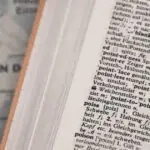
Writing the Time: AM and PM or a.m. and p.m.?
AM and PM are terms used when writing times. However, there are a few different ways to write them, which can be tricky when proofreading. Should you just aim for consistency? Or is there a correct way to do it in certain contexts? In this post, we explore:
- What the terms AM and PM mean.
- How to capitalize and punctuate AM and PM.
- When to add a space between the time and AM or PM.
- What the most well-known style guides recommend.
Read on and learn more about writing the time.
What Do These Terms Mean?
“AM” and “PM” are both abbreviations of Latin terms and refer to a specific time of day:
- AM (ante meridiem) means “before noon,” so it refers to the morning.
- PM (post meridiem) means “after noon,” so it refers to any time after midday.
When using a 12-hour clock, then, these terms clarify the time we have in mind (e.g., 12 AM is midnight, whereas 12 PM is midday). This is not necessary when using a 24-hour clock.
There are, however, a few options for how you write these terms, as we will explore below.
Capitalization of AM and PM
You may have noticed that we write “AM” and “PM” with capital letters in this post. For instance:
The performances today will be at 11 AM and 3 PM.
But that is not the only legitimate option! You can also write them with lowercase letters:
The performances today will be at 11 am and 3 pm.
Or you can write them with small caps. All are acceptable ways of writing these terms, so ultimately it comes down to preference or your client’s chosen style guide.
Punctuation of AM and PM
Another variation is adding periods between each letter in these terms. For instance:
The meeting ended at 11 a.m.
Did you see the 5:00 p.m. bulletin?
This is common when using lowercase letters, although some also add punctuation when using small caps. It would be unusual to punctuate these terms when using standard capital letters, though. Finally, keep in mind that you do not need an extra period after the abbreviation when punctuating a time like this at the end of a sentence.
Spacing AM and PM
The final variation you will see with these terms is whether to add a space between the time and AM/PM. In the examples so far, we have added this space, as it is more common to do so.
However, when using the unpunctuated forms of these terms, you can close the gap. This does not apply when using the punctuated forms, so take care not to mix up these styles:
Spaced and Unpunctuated: I have a class at 2 PM today. ✓
Unspaced and Unpunctuated: I have a class at 2PM today. ✓
Spaced and Punctuated: You need to be there by 9:00 a.m. ✓
Unspaced and Punctuated: You need to be there by 9:00a.m. ✗
As with the other options here, the space before AM and PM is largely a matter of preference.
What Do Style Guides Recommend?
As you can see, there are many options available when writing these terms. And as a proofreader, your main priority will be to ensure your client uses a consistent style. However, if your client is using a style guide, too, you can check it for advice.
Some well-known style guides suggest the following:
| Style Guide | Lowercase or Capital? | Punctuation? | Spacing? |
| AMA | Small caps | No | Yes |
| APA | Lowercase | Yes | Yes |
| Associated Press | Lowercase | Yes | Yes |
| Chicago | Either lowercase or small caps | Yes with lowercase letters; optional with small caps | Yes |
| MHRA | Lowercase | No | No |
| MLA | Lowercase | Yes | Yes |
To learn more about proofreading for style, give our Becoming A Proofreader course a try.



Join the Conversation
Leave a Comment
Your email address will not be published.